Question
The IUCN Red List provides information about the conservation status of species throughout the world, including the American badger, Taxidea taxus, and the black-footed ferret, Mustela nigripes.
Fig. 2.1 shows an American badger and Fig. 2.2 shows a black-footed ferret.
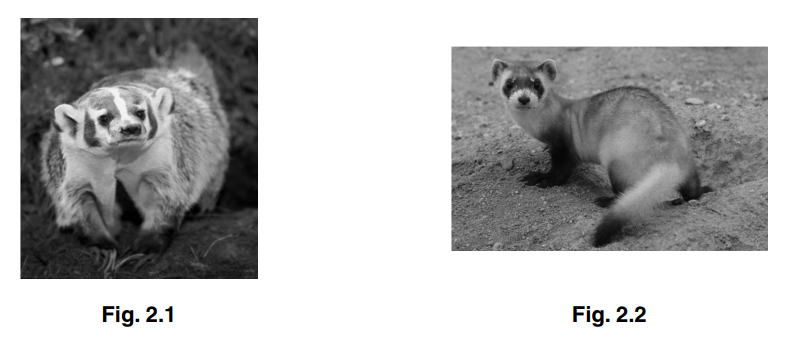
Fig. 2.3 shows the IUCN conservation status of the American badger and the black-footed ferret in 1987 and in 2013.
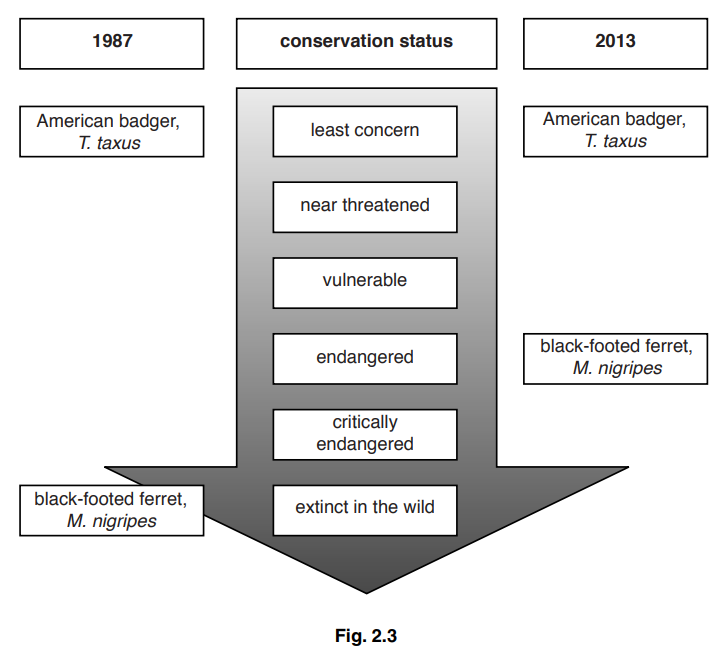
(a) American badgers and black-footed ferrets are both predators.
- American badgers feed on prairie dogs and a range of other animals.
- Black-footed ferrets feed almost entirely on prairie dogs.
- American badgers do not have any animal predators.
- Black-footed ferrets are preyed upon by American badgers and several other predators.
Suggest reasons why black-footed ferrets are an endangered species but American badgers are not.[2]
(b) In 1987, the world population of black-footed ferrets consisted of only 18 animals living in captivity. A number of different agencies worked together to prevent the extinction of this species. Their goal was to produce young black-footed ferrets to be released into the wild. The survival and breeding of the animals in the wild would then be monitored and supported.
The collaborating agencies included:
- local government
- universities
- zoos
- native tribes that owned undeveloped reservation land.
Outline how these different agencies could contribute to successful conservation of the black-footed ferret.[3]
(c) Black-footed ferrets were released at three different locations in the wild at different times. Each population was established from captive-bred animals.
Fig. 2.4 shows the population sizes of black-footed ferrets at the three release locations.
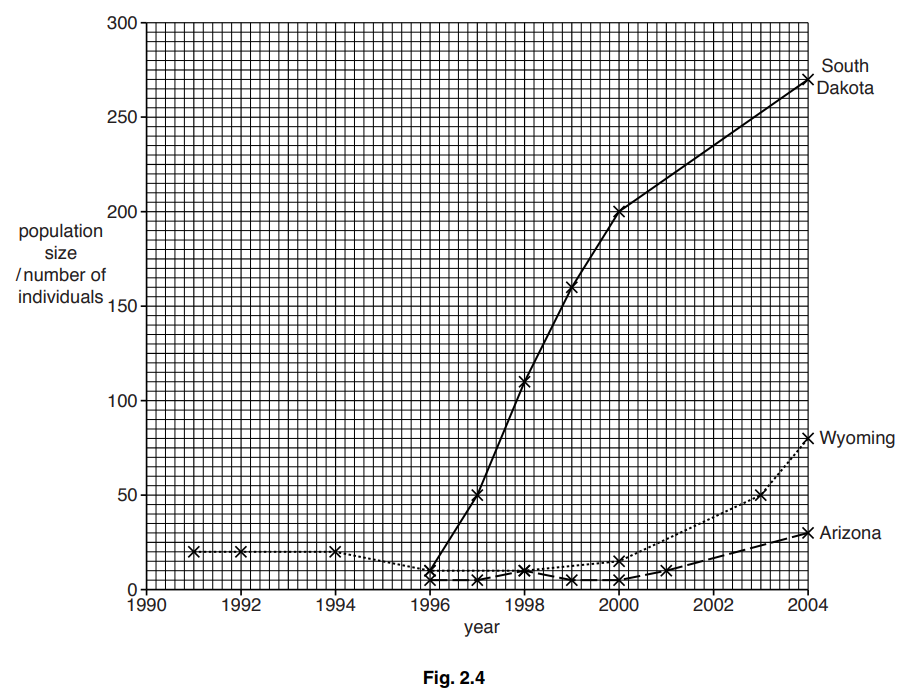
(i) Describe the patterns of population growth at the three locations where black-footed ferrets were released.[3]
Table 2.1 shows information about the gene pool of the populations of black-footed ferrets and the leg sizes of the black-footed ferrets at each release location in 2004.
All three populations were started by animals from the same captive population. In this original captive population, 100% of the genes surveyed showed polymorphism, that is, they had more than one allele. The mean number of alleles per gene locus was two.
The population at the South Dakota location in 2004 maintained the same level of genetic variation and leg size data as the original captive population, but the populations in Wyoming and Arizona showed changes.
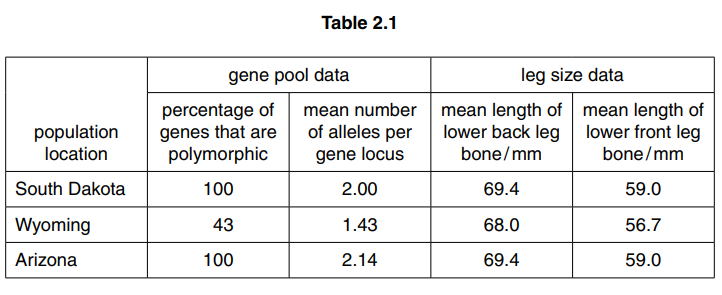
(ii) Use Table 2.1 to describe how the gene pools and leg sizes of the Wyoming and Arizona black-footed ferret populations have changed, compared to the original captive population.[2]
(iii) With reference to Fig. 2.4, suggest reasons for the changes you have described in (ii).[3]
(d) In 2008 some black-footed ferrets were born in captivity as a result of IVF using frozen sperm that had been stored for several years.
Explain the benefits of using frozen sperm in captive breeding programmes.[3] [Total: 16]
Answer/Explanation
Ans:
2 (a) 1 ferrets feed on, prairie dogs / one type of prey
or
badgers feed on prairie dogs and range of other animals ;
2 reduction in prairie dog population decreases number of ferrets (more than badgers) ;
3 ferrets have many predators
or
badgers have no predators ;
4 predators decrease number of ferrets more than badgers ;
(b) 1 (local government) authorities, education/ pass protection laws / create protected zones ;
2 (universities) carry out research ;
3 example of relevant research ;
e.g. improve success of breeding programme
do IVF
monitor genetic variability
coordinate stud records
determine suitable habitat requirements for release sites
monitor wild populations
4 (zoos) run captive breeding (programmes)/ description ;
5 native Americans /reservations /tribes, provide suitable habitat ;
(c) (i) 1 South Dakota increased, continuously / steeply ;
2 Wyoming constant initially then decreased (to 10) before increasing ;
3 Arizona population (very low level then), recovering/ increasing ;
4 comparative figs ;
e.g. same site in 2 years or 2 sites in 1 year
(ii) 1 Wyoming ferret bone lengths smaller ;
2 Wyoming has lost, alleles / genetic variability / polymorphism
or
gene pool decreased ;
3 Arizona has gained, alleles / genetic variability / polymorphism
or
gene pool increased ;
(iii) 1 (Wyoming reduced size may be due to) less food available/ inbreeding ;
2 (Wyoming smaller gene pool due to) very small population size ;
3 (Arizona extra allele due to, chance/random) mutation ;
(d) 1 increases number of, breeding stock /potential mates ;
2 larger gene pool/increase in genetic variation ;
3 sperm transported to other, zoos / breeding facilities ;
4 (frozen/ stored), sperm acts as gene bank ;
5 alleles available from animals no longer alive ;
Question
Table 8.1 shows the total number of plant species, the total number of insect species and the
number of habitats in three areas, A, B and C.

(a) Identify the area with the highest biodiversity.
Give reasons for your choice of area.
area ………………
reasons …………………………………………………………………………………………………………………….
…………………………………………………………………………………………………………………………………
…………………………………………………………………………………………………………………………………
…………………………………………………………………………………………………………………………………
…………………………………………………………………………………………………………………………… [3]
(b) Identify the area that is likely to be affected the most if the environment changes.
Give a reason for your choice of area.
area ………………
reason ……………………………………………………………………………………………………………………..
…………………………………………………………………………………………………………………………………
[1]
(c) State one reason why it is important to conserve biodiversity in all three areas.
…………………………………………………………………………………………………………………………………
…………………………………………………………………………………………………………………………………
…………………………………………………………………………………………………………………………… [1]
[Total: 5]
▶️Answer/Explanation
Answer:
8(a) 1 C ;
2 greater/ highest / most, number of (plant + insect) species / species richness ;
3 greater/ highest / most, number of habitats ;
8(b) area A because if one species, increases / decreases (in abundance), this may affect the whole, community / food web /
ecosystem ;
8(c) any one from:
1 species may have, medicinal / economic / aesthetic, benefits ;
2 (to maintain) genetic diversity / genetic variation / alleles ;
3 ref. to ethical / moral / stewardship ;
Question
The St. Lawrence river in Canada has been identified as an area with very high biodiversity.
(a) Explain how the term biodiversity can be considered at different levels.[2]
(b) The St. Lawrence river is rich in species of aquatic mammals, especially whales.
In spring, thousands of whales swim from the Atlantic ocean up the St. Lawrence river. Thirteen different species of whale have been recorded. One of these is the blue whale, Balaenoptera musculus.
Fig. 1.1 is a diagram of a blue whale.
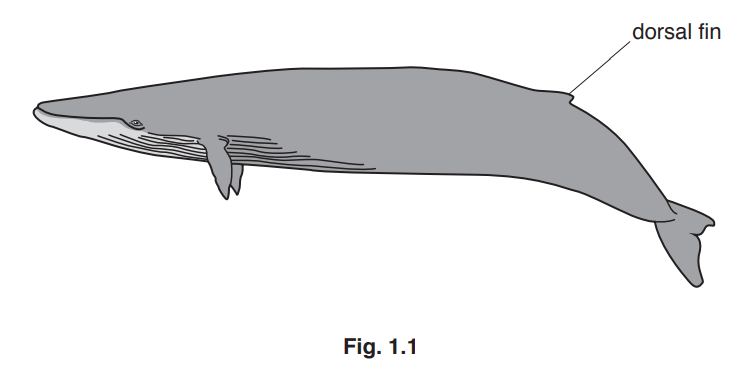
Photographs of blue whales are analyzed by computer so that individual whales can be identified and population abundance can be estimated. Each blue whale is different in colour and in the shape of dorsal fin. Different whales also have different patterns of scarring.
(i) State the two sources of phenotypic variation in the blue whale population.[1]
(ii) Suggest one reason why it is difficult to measure the actual population size of the blue whale.[1]
(c) The St. Lawrence river runs through very busy industrial areas. It has many ports for cargo ships, a good fishing trade and many whale-watching boat trips for tourists.
Decades of whale hunting has caused a large decrease in whale population sizes. Since whale hunting was banned, whale populations have not recovered.
Seven of the thirteen whale species in the St. Lawrence river have been rated as endangered species.
Suggest two reasons why the populations of whales have not recovered since the ban on whale hunting.[2]
(d) Fat samples from under the skin of individual whales of several different species were taken. These were analyzed and the concentrations of the toxins DDT and PCBs were measured.
Suggest why whales were found to have accumulated very high concentrations of DDT and PCBs in their fatty tissues.[2]
(e) Algal blooms sometimes occur in the area of the Atlantic ocean near the St. Lawrence river. These result from rapid population growth of unicellular algae such as Alexandrium tamarense.
(i) A. tamarense produces saxitoxin, a neurotoxin that causes muscle paralysis by acting on voltage-gated sodium ion channels in neurons. Saxitoxin can kill whales.
Suggest how sax toxin results in the death of a whale.[2]
(ii) Algae, such as A. tamarense, used to belong to the kingdom Plantae but are now classified in the kingdom Protoctista.
State one reason why A. tamarense is classified in the kingdom Protoctista and not in the kingdom Plantae.[1] [Total: 11]
Answer/Explanation
Ans:
1(a) two from:
- variation in / diversity of, ecosystems / habitats ;
- number of / (how) many / variety of / diversity of, species ;
- the (relative) abundance of each species ;
- genetic diversity / range of alleles, within a species ;
1(b)(i) genes and environment ;
1(b)(ii) one from:
- whales, mobile / swim / migrate ;
- (they inhabit) large, area / distances ;
- live, underwater / at great depths ;
1(c) two from:
- (water) pollution from, industry / boats ;
- accidents involving / damaged by, boats / fishing gear ;
- lack of / competition for, food / krill / prey ;
- noise / vibration, disturbs whale, communication / behaviour / mating ;
- illegal, whaling / hunting ;
- reproduction rate is slow / one offspring at a time / long gestation ;
1(d) two from:
toxins (PCBs / DDT) are
- present in, water / river / sea ;
- ingested / absorbed by, producers / phytoplankton / algae ;
- bioaccumulation or toxins, pass up / accumulate up, food chain ;
- persistent / long-lasting / not broken down (in environment / whale) ;
- fat / lipid, soluble ;
1(e)(i) two from:
- sodium ions do not enter (neurons / nerve cells / axons) ;
- (neurons) cannot depolarize or cannot, generate / transmit, impulses / action potentials ;
- reason for death ;
1(e)(ii) one from:
unicellular / not multicellular ;
motile / have flagella ;